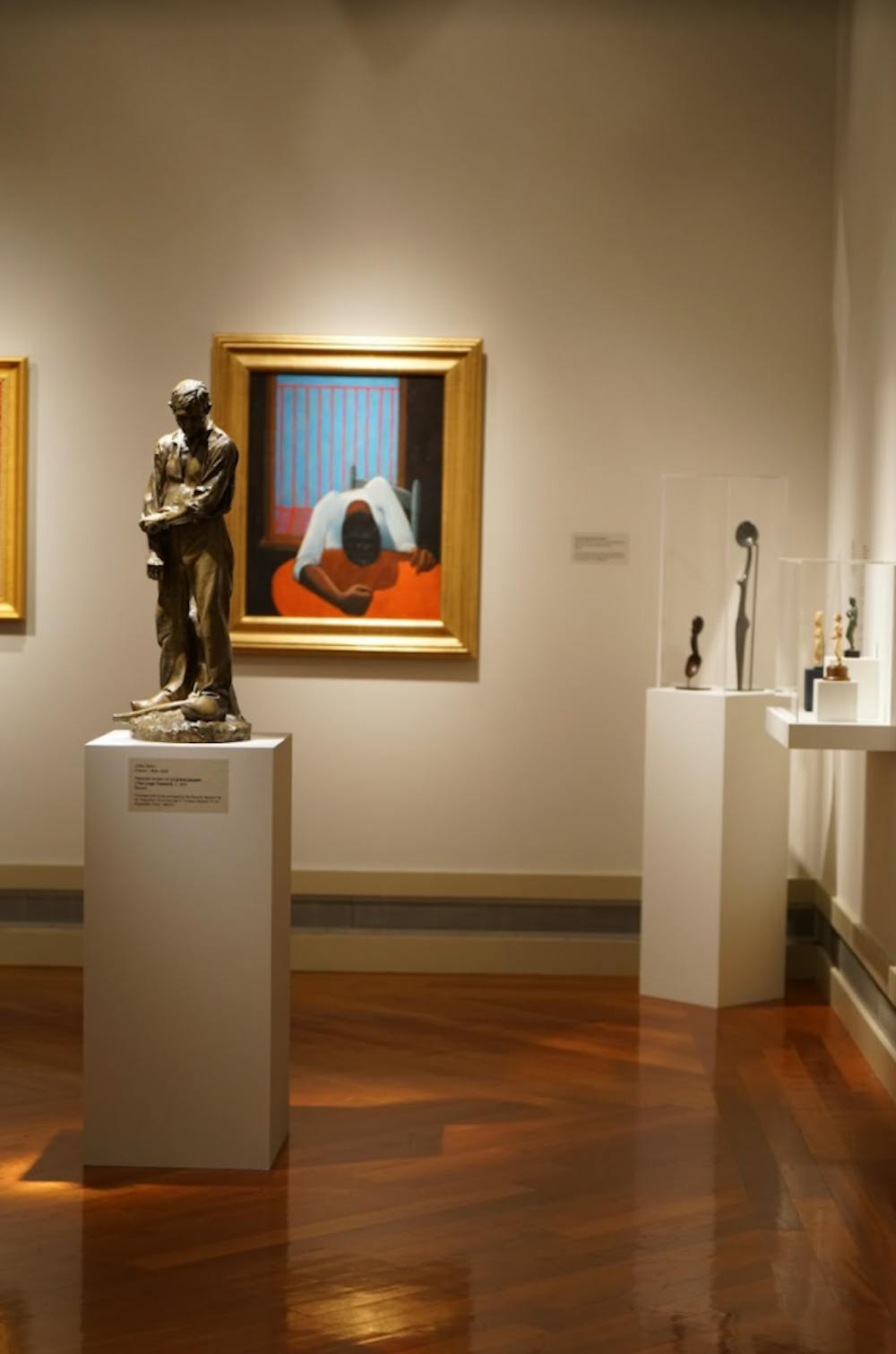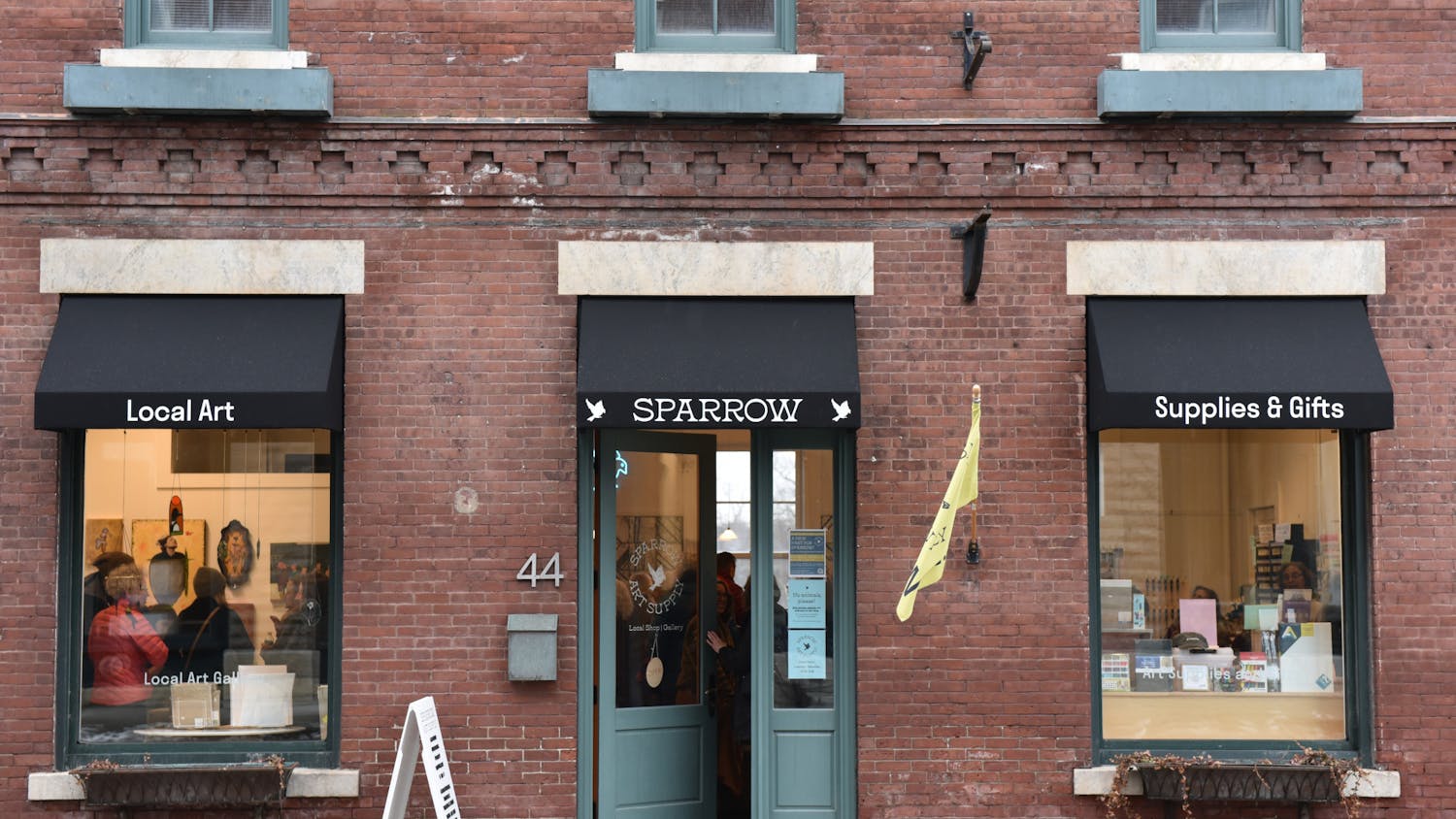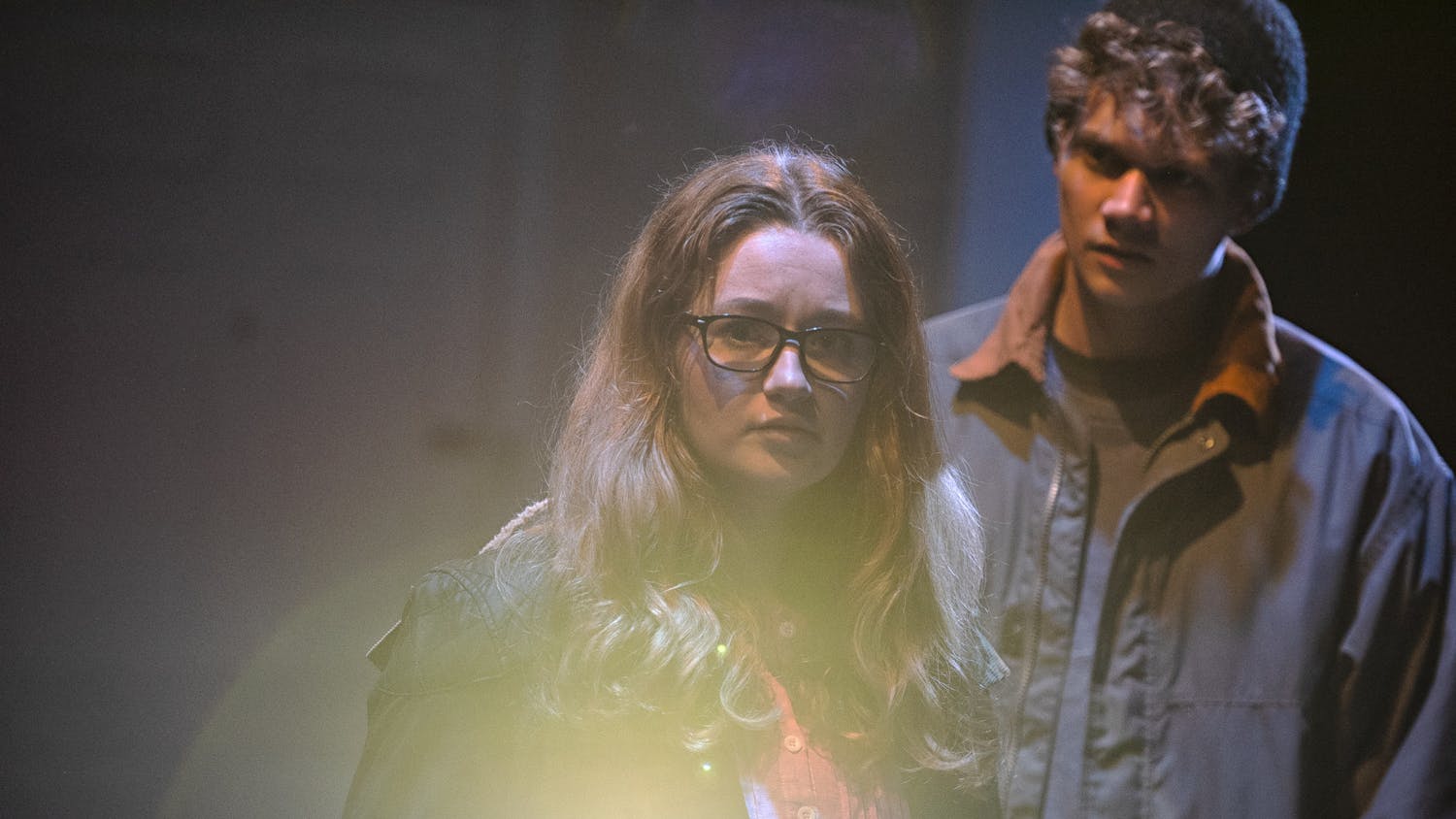 In January 2021, the Middlebury College Art Museum began an extensive rehang — installing a new organization concept that displays permanent collection art by theme rather than based on region and chronology, as is typical of most European and American museums. With this rehang, along with the implementation of related initiatives, museum organizers hoped to increase the museum’s accessibility and inclusivity to reach a wider audience and to showcase a more diverse range of artists.
In January 2021, the Middlebury College Art Museum began an extensive rehang — installing a new organization concept that displays permanent collection art by theme rather than based on region and chronology, as is typical of most European and American museums. With this rehang, along with the implementation of related initiatives, museum organizers hoped to increase the museum’s accessibility and inclusivity to reach a wider audience and to showcase a more diverse range of artists.
Jason Vrooman ’03 serves as both the chief curator and director of engagement for the museum, roles that are separated into two distinct jobs at most museums. His experience connecting the responsibilities of each role helped him plan and conceptualize the rehang project. His role as director of engagement challenges him to consider how people connect with the works on display while he completes duties related to acquisition and exhibition organization in his role as curator.
“It’s very unusual to have a double curator and educator, but we like it because the two [roles] inform each other. As I curate, I try to keep in mind how the works will support the museum’s educational goals as a resource for Middlebury classes, local schools and adult community members,” Vrooman said.
Beginning in late 2019, Vrooman worked closely with Museum Director Richard Saunders, Associate Curator of Ancient Art Pieter Broucke, Museum Registrar Meg Wallace and Museum Designer Ken Pohlman to rethink how the permanent collection could be used to tell new stories. Sabarsky Graduate Fellow Sarah Briggs ’14.5 and Sarah Laursen — who served as the museum’s curator of Asian art before departing from the museum staff in summer 2020 — were also closely involved in the beginning stages of the process.
The committee also frequently sought student input from participants in the 2020 summer internship program and conducted a survey of professors who had historically used the museum in their courses to ensure changes would not disrupt existing teaching.
For about a year, the group met weekly to discuss how chronological and geographical approaches to displaying art contribute to Eurocentric biases and to strategize ways to remedy this narrow lens at Middlebury’s museum.
“Our museum has for decades been collecting a diverse array of artists, but the permanent collection has a particular focus on Mediterranean, American and European art while other stories were told in small ways,” said Vrooman. “We’ve been focusing on collecting more work from women, queer artists and artists of color for long before the rehang project began, and we wanted to find a way to highlight this diversity by having themes.”
Vrooman also mentioned that the museum plans to add more works from indigenous and disabled artists.
The group ultimately chose 12 themes to juxtapose works from across time periods and cultures. Some of the themes include Art and Activism, Portraiture, People and the Planet, Ritual and Devotion, Death and Remembrance, Intersecting Cultures and The Art of Storytelling. Under Death and Remembrance, for example, Han Dynasty funereal art shares a space with pieces from ancient Egyptian burial practice.
“We really hope people will look for similarities, but we also want to respect the difference between these works,” said Vrooman. “We want these spaces to open up dialogue and invite conversation about important social issues, as well as ask people to think about how the past influences how we engage with one another in the present.”
To supplement the rehang, the committee enlisted museum ambassadors and other students to help write new labels and edit existing text to bolster inclusivity. Claire Darrow ’22, a museum ambassador since fall 2019, described how the language used in museums can often uphold stereotypes and reify certain cultural biases.
“We used terms that might be easier to understand if you don’t have a specific art history educational background. I hope that something as small as a label or inclusive language can make people feel more comfortable in a museum setting and allow them to see their stories and perspectives reflected in the art,” Darrow said.
One example Darrow referenced as a common misleading use of language in museums is the use of the past tense when describing art from indigenous cultures of the Americas, which can imply that they no longer exist. “These cultures are still very active,” Darrow said.
Aside from descriptive labels, the museum also instituted what it calls its “Label Talk Initiative.” Through this project, three participants respond to each selected artwork from a personal, professional or academic perspective. Vrooman hopes that showcasing three separate viewpoints will show that there are multiple ways to view art and help make the museum a space where many voices are welcome.
“Part of our process was challenging the expectations of who gets to interpret art in a museum,” said Vrooman. “In most museums, you don’t know who wrote the labels, but you can presume they came through a very particular educational path.”
Pearl Akoto ’24, who grew up in Ghana before moving to New York, got involved with the Label Talk Initiative by writing a personal response to a piece called “Untitled (with red)” by the Ghanian artist El Anatsui. “I had never seen any form of representation of my culture, especially in Vermont,” she said.
While the piece is a commentary on the transatlantic slave trade, Akoto hopes her response will help visitors focus on the modern aspects of the work and its evocation of current day issues related to environmental justice.
“I actually tried to avoid referencing the transatlantic slave trade. Of course the struggles and pains of slavery are a part of our history and culture, but we are much more than that and are not allowing it to define us anymore,” she said. “We are emerging from that and creating a new narrative for the present.”
Museum visitors can continue the conversation by scanning a QR code next to the piece and adding their own response on a virtual blog.
In addition to the thematic reorganization, the new design instituted other components to increase accessibility. These changes included lowering the hanging height of most works by about two inches, which can make a substantial difference for visitors in a wheelchair, children or someone who chooses to sit to view a work. Staff also increased the font size on labels and chose to use black sans serif text against a white wall after researching the legibility of different type fonts.
There are fewer works on display in the new organization to open more space for tour groups and classes to visit without getting too close to the pieces. However, approximately 15 works from the permanent collection will rotate at the end of each semester because they are light sensitive. The pieces in rotation will specifically include works from diverse artists.
Vrooman hopes the rehang has been a positive step toward inclusivity but also acknowledged there is still a lot more work to do.
“We are open to responses that may reshape the way we think and invite members of the community to offer feedback directly or at bit.ly/MuseumComments,” said Vrooman.
Currently, the museum is open only to students, faculty and staff by appointment due to Covid-19 precautions. In addition to the permanent collection galleries, visitors can enjoy the special exhibitions “A New Lens: Contemporary Video & Animation” and “Art & Protest: Artists as Agents of Social Change,” both on display until Dec. 12.

Ideal Dowling '22 is an Editor at Large.
She previously served as a copy editor and Local section editor.
Dowling is majoring in Political Science and minoring in French and History. During the summer of 2021, she worked as a consultant for the startup accelerator Aegis Ventures and as a research assistant for Professor Stanley Sloan as he worked on his book "De-Trumping U.S. Foreign Policy: Can Biden Bring America Back?" In addition to her work at The Campus, Dowling is captain of Middlebury's women's squash team and an employee at the Middlebury College Museum of Art.




